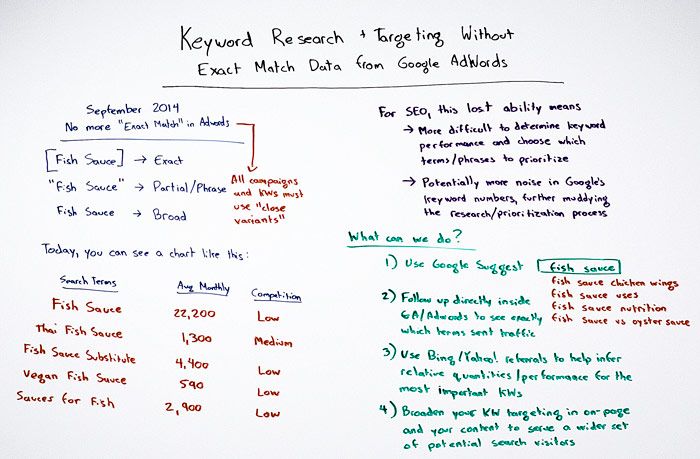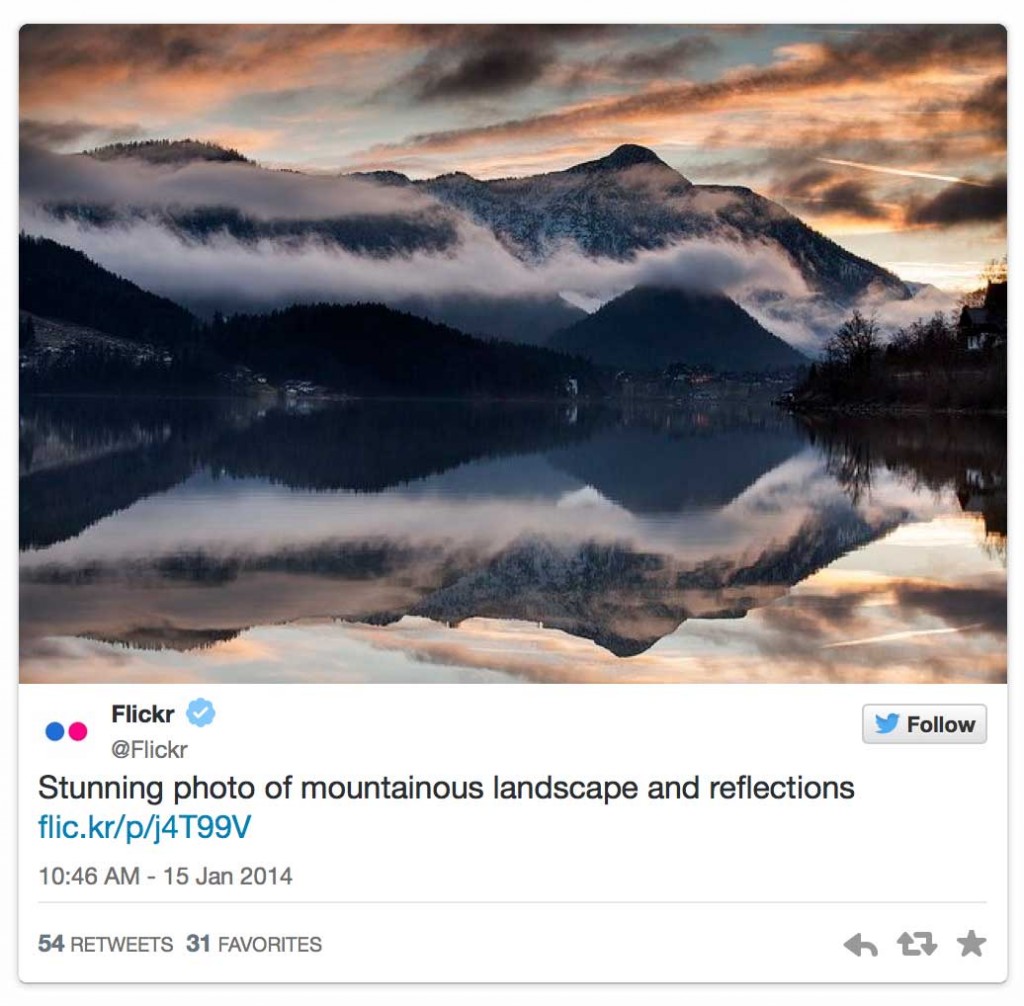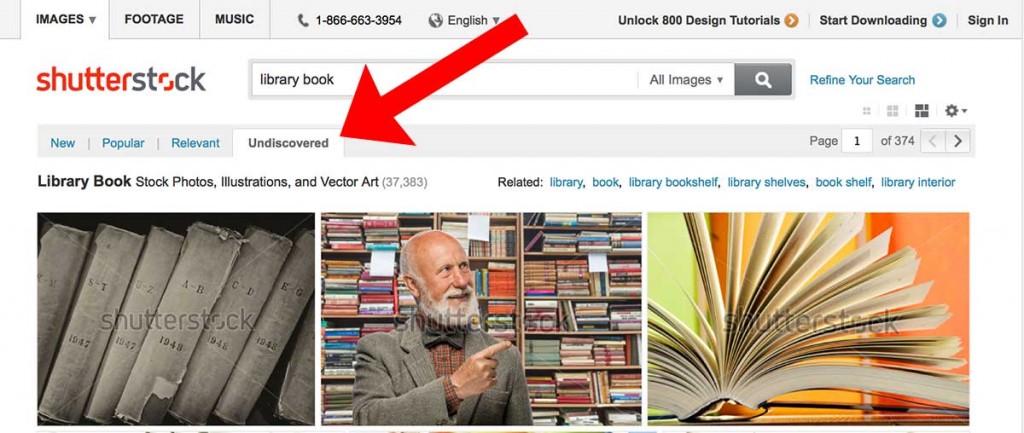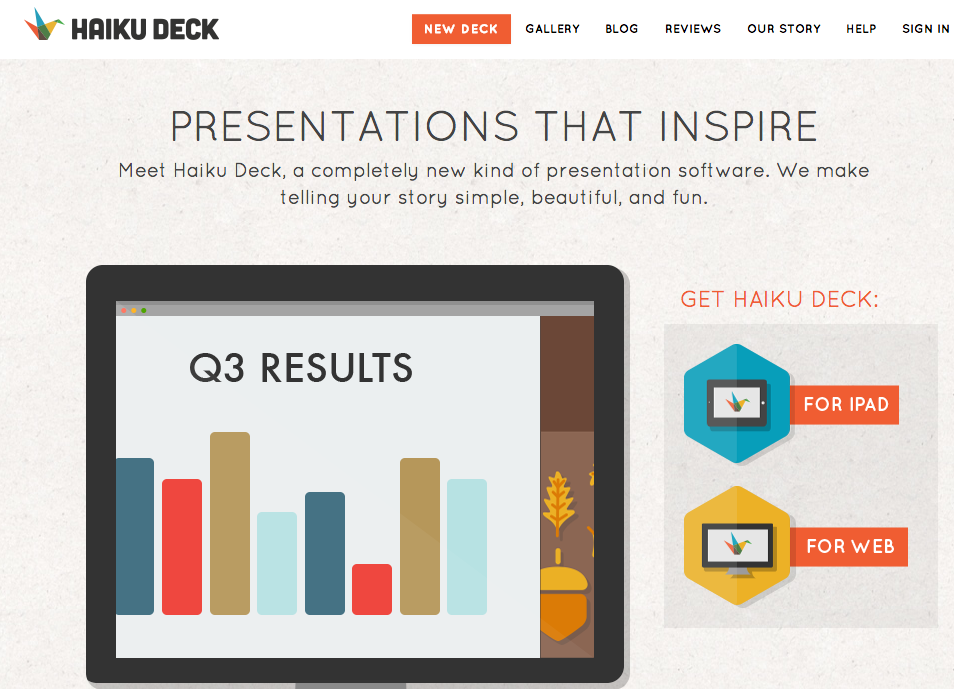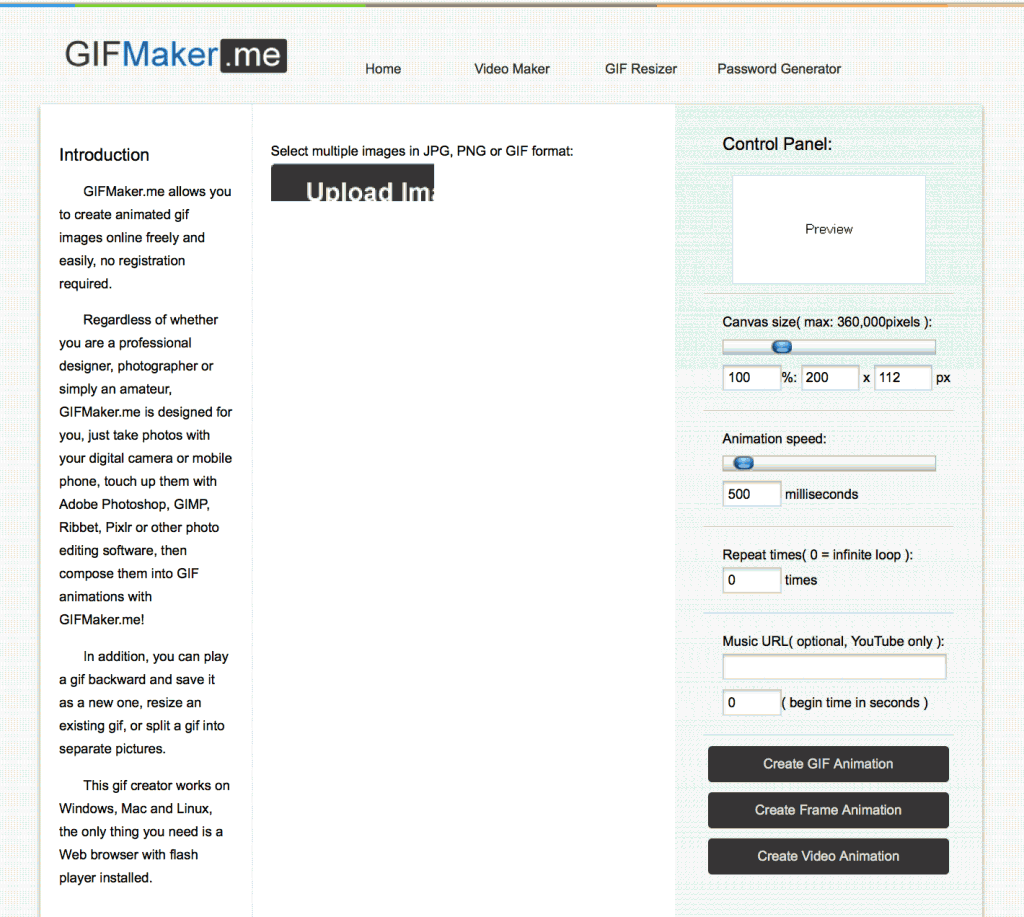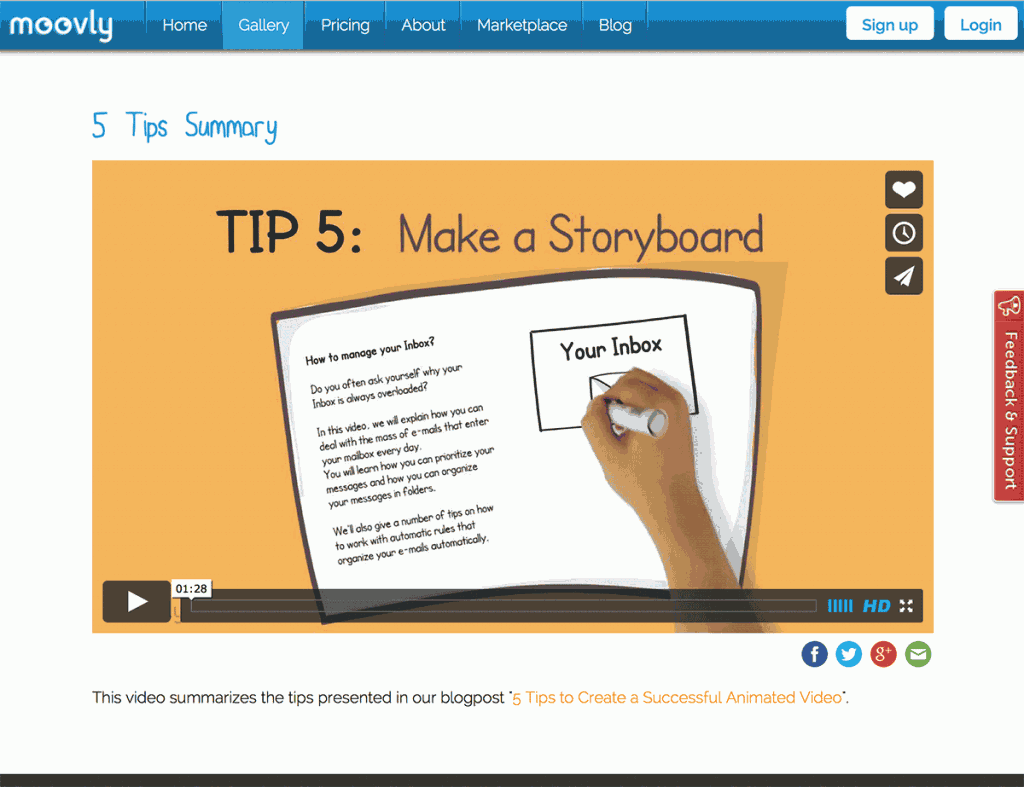Editor’s Note: This article was originally published by Web Marketing Today. Practical Ecommerce acquired Web Marketing Today in 2012. In 2016, we merged the two sites, leaving Practical Ecommerce as the successor.
Images are an integral part of the Internet, and they’re getting more important all the time. That’s mostly because images are a key part of human consciousness. Our brains process visual information much faster than text.
Social media and audience engagement is increasingly visually based, not text based. For evidence, think of Pinterest. Think of Instagram, Snapchat, or SlideShare. Think of YouTube, now the second-largest search engine.
There are dozens of studies that document how people share image-based content more than text-based. Earlier this year, eMarketer showed us that on Facebook, photographs crush all other media formats.
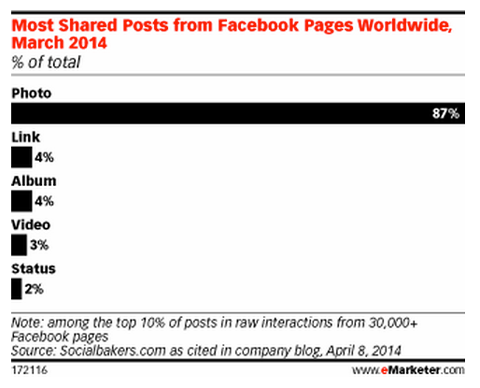
According to eMarketer, 87 percent of the most-shared posts on Facebook contain photos.
Moreover, Twitter published data that shows 35 percent of retweets contain photos.
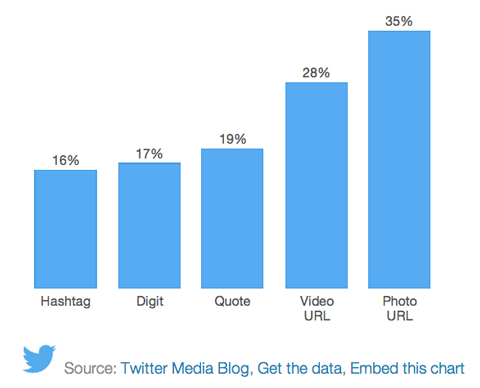
Thirty-five percent of retweets contain photos, according to Twitter.
In other words, the data supporting images as the most viral kind of content is extensive. But trick is how to apply it to your day-to-day marketing. So here are 11 ways to leverage the power of the visual web in your content marketing. All of them are easy — and free or nearly free. And you won’t have to hire an art department.
1. Take your Own Pictures
Stock photography is a helpful tool, but it’s nowhere near as compelling as a homemade image. Fortunately you don’t have to be a professional photographer to create effective images. Consider these two examples of easy, homegrown visual content.
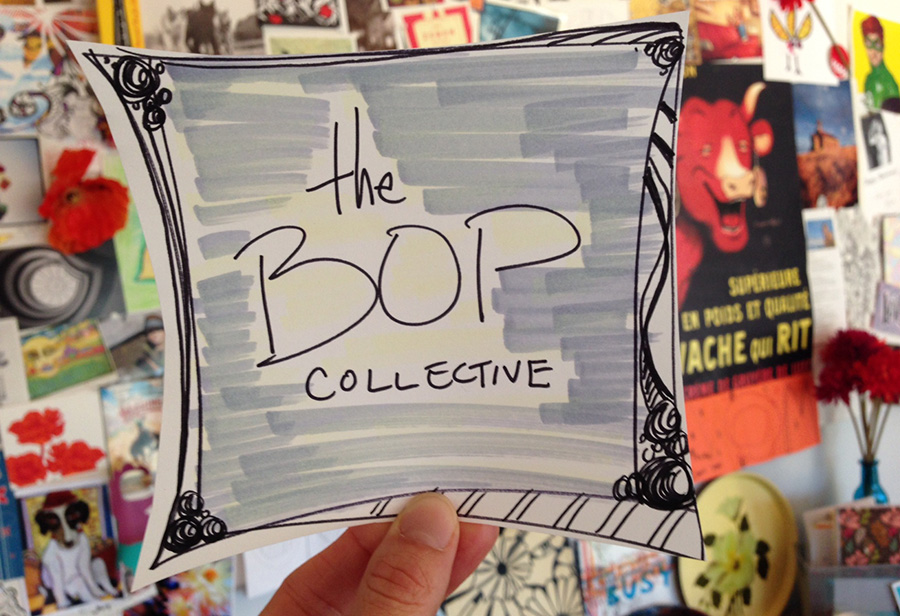
A handmade graphic from an email promoting Helene Scott’s Bop Collective.
2. Set Up Twitter Cards
Do your tweets look dull? Dress them up and get nearly 200 percent more retweets with Twitter cards. Twitter offers nine different kinds of Twitter cards. For image-rich tweets, use Photo Cards.
Or Gallery Cards, like this.
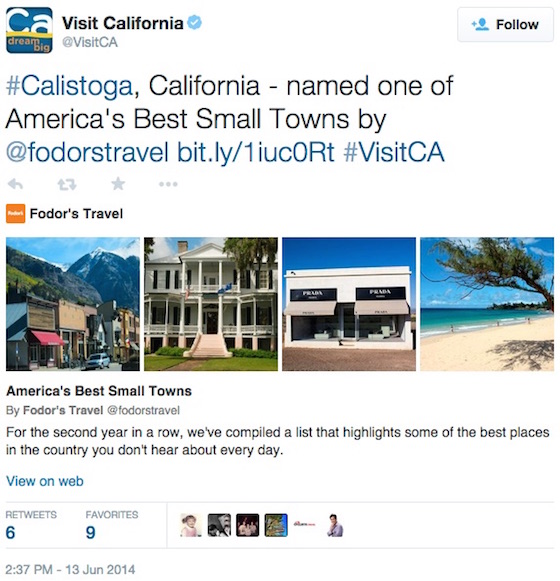
A Twitter Gallery Card.
Twitter has an extensive “Getting Started Guide” for Twitter cards. If you’re on WordPress, you can install and use the plugin JM Twitter Cards to set up Twitter cards in a snap.
3. Find Better Images
Even when you can’t take your own photographs, you don’t have to fall into using the same stock photographs everyone has used over and over again. Try these sites for excellent, high-quality images that are copyright free.
If you do have a subscription at one of the big stock photo sites, avoid over-used photos simply by changing the settings of your searches. Shutterstock’s “Undiscovered” tab is a good example of this. Other major stock photo sites have similar functionality.
4. Make Better Screenshots
Behavioral experts advise that the easier something is to do, the more likely we are to do it. Apply this to your screenshots. Instead of using your computer’s default screen capture app, try one of these tools.
- Awesome Screenshot (for Firefox, Chrome or Safari users)
- Screengrab (for Firefox users)
- Lightshot (for Chrome users)
- Snagit (for Windows or Mac)
- Greenshot (for Windows users)
5. Create More SlideShares
These are especially easy to knock out for “listicles” or any blog post or ebook that is basically a list, like “25 Ways to Promote a Blog Post,” for example. You don’t even have to use PowerPoint to create your SlideShares any more. Use the online tool Haiku Deck to build your presentations. Haiku Deck was recently purchased by SlideShare (which is owned by LinkedIn). The integration between the two tools is excellent.
6. Create a Pin of Every Blog Post, Ebook, or Content Marketing Project
Ebook covers make ideal Pinterest pins. Or, if your blog is set up correctly, each blog post’s header image can seamlessly become a pin. Pinterest is also excellent for content curation, or for doing research. Just create a board for each topic you want to cover and start pinning.
Also, check out Scoop.it. More and more content marketing pros are mentioning Scoop.it as a terrific and underused source of free website traffic.
7. Add All Infographics and PDFs to SlideShare
SlideShare can handle more than just PowerPoint decks or Haiku Deck files. PDFs will work on it, too. Want to “gate” your content — i.e., require an email signup before people can see your ebooks and other PDF documents? Just set up LeadShare, SlideShare’s now free email opt-in form. It will take less than 5 minutes to set up each opt-in form.
8. ‘Reblog’ on Tumblr
Tumblr is a blogging platform, more or less. But it’s more image friendly. It’s also a good source of free traffic. Tumblr has generated enough traffic for B2B and B2C brands that marketing directors are reporting it worth the extra effort. Besides, you won’t be using any new content. You’ll just be reposting old content.
9. Use More Animated GIFs
These are so easy to make and they work on web pages, on some social media sites (like Google+), and in emails. Animated GIFs are an good way to show as many as six different steps for how-to tutorials or to show a series of product photos. The file size for animated GIFs can be a larger than static images. But if you utilize image compression, they’re not so bad.
Gifmaker.me is the best free animated GIF creator I’ve found to date.
10. Add Alt Text to All Images on Your Site
Alt text, also known as each image’s “alt tag,” is a short text description of what the image is about. Alt tags help with search engine optimization. They are one of the two parts of an image search engines can read. The other part is the image file name.
Take the time to write a short description of the image in the alt tag. Using about 80 characters is good. In addition to SEO, alt tags help on social media sites and other places on the web. As images get used more and shared more, the alt tag is becoming more important. Even now, Pinterest and Facebook often use images’ alt tags as the default description.
11. Test Drive Animated Explainer Videos
Explainer videos are fantastically effective. The trouble is, they often cost $20,000 or more to create. But you can shortcut that bill: Just try any one of the new animated explainer video tools. Here are a few.
- PowToons. Available for free, minus some features and with PowToons’ watermark.
- GoAnimate. $39 a month, and GoAnimate still puts its watermark on your video.
- Moovly. $19.95 a month to not have to use Moovly’s watermark in your videos.
- Wideo.co. $49 a month to not have to see the watermark.
Don’t want to spend days learning video animation software and creating your animation? There are already several people on Fiverr offering “PowToon-like” explainer videos. For $5, why not try it out?
Those are just a few of the ways to apply visual content best practices to your content. Are there any other techniques you’ve used? How did they work? Let us know in the comments.

